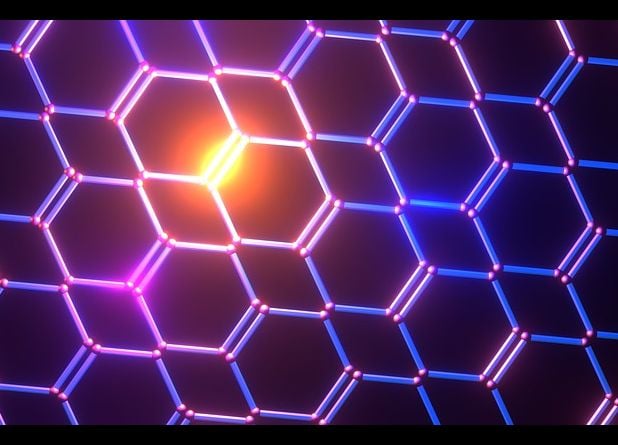QUANTUM-COHERENT,MAGNETIC FIELD-SENSITIVE AND GRAPHENE-DERIVED SUPERCONDUCTING MATERIAL
The first quantum coherent and magnetic field-sensitive superconducting component has been created from graphene by scientists. This event paves way for creating intriguing opportunities in the field of superconducting technologies .
Scientists produced two-dimensional crystals with just one layer of carbon atoms several decades ago. This substance, now known as graphene, has had a long and successful career of usage. Today, graphene is utilised to reinforce things like tennis rackets, vehicle tyres, and aeroplane wings because of its extraordinary strength. However, it is also a fascinating topic for basic research because physicists are constantly finding new, astounding phenomena that haven't been seen in other materials.

Bilayer Graphene Crystals - A suitable twist
Researchers are particularly interested in bilayer graphene crystals, which have two atomic layers that are slightly rotated with respect to one another. About a year ago , it was shown that Josephson junctions which are the basic building blocks of superconducting devices could be produced using twisted graphene.
Based on this finding, scientists may now create the first SQUID, or superconducting quantum interference device, from twisted graphene to show how superconducting quasiparticles interfere. Traditional SQUIDs are already in use in fields including geology, medicine, and archaeology. Even the tiniest variations in magnetic fields can be detected by their sophisticated sensors. SQUIDs, however, can only be used in conjunction with superconducting materials, therefore while in use, they need to be cooled with liquid helium or nitrogen.
SQUIDs can house quantum bits (qubits) in quantum technology, serving as the building blocks for performing quantum operations. SQUIDs are the fundamental building blocks for more complicated circuits, similar to how transistors are to semiconductor technology, according to researchers.
The range is expanding
Scientists developed a graphene SQUID that is not more sensitive than its usual aluminium equivalents but also requires cooling to temperatures less than 2 degrees above absolute zero. So, according to researchers - it is not really a breakthrough for SQUID technology. It does, however, considerably widen the range of applications for graphene. It was demonstrated that single-electron transistors could be constructed from graphene five years ago. Since then, superconductivity has been added.
It is astounding that biassing an electrode allows for precise control of graphene's behaviour. The substance can be superconducting, conducting, or insulating depending on the voltage used. Now there is access to the rich spectrum of opportunities given by solid-state physics.
Another intriguing development is the ability to combine the two essential building pieces of a semiconductor (transistor) and a superconductor (SQUID) in a single material. This enables the development of innovative control operations. According to researchers, the SQUID is often constructed of aluminium while the transistor is typically made of silicon. These are several materials that require various processing procedures.
An extraordinarily difficult production process
Though graphene's superconductivity was first identified five years ago, there are currently only a dozen or so experimental organisations investigating the phenomena globally. Even fewer are able to create a functional component out of superconducting graphene.
The difficulty is that scientists must perform numerous sensitive tasks one after another: The graphene sheets must first be perfectly angled with respect to one another in order to be aligned. After that, electrodes are connected, and holes are etched. The twist angle disappears if the graphene is heated, which frequently occurs during cleanroom processing, causing the two layers to realign. This is a really difficult job, according to researchers , because the entire standard semiconductor technology needs to be modified.
The idea behind hybrid systems
There are now several distinct qubit technologies being evaluated, each with unique benefits and drawbacks. Numerous research teams at the National Center of Competence in Quantum Science and Technology are primarily responsible for this (QSIT). It might be possible to combine the advantages of these systems if researchers are successful in linking two of them using graphene. According to researchers, the outcome would be "two separate quantum systems on the same crystal."
Additionally, this would open up new avenues for superconductivity research. With these elements, scientists would be better equipped to grasp how superconductivity in graphene originates.Currently there is only understanding that this material exhibits various superconducting phases, but there is not yet a theoretical model to account for them.
